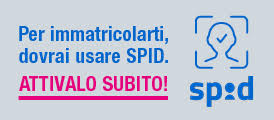Learning objectives
The learning objectives of the innovation design course are related to a professional profile able to master the following functions:
- To organize and lead an innovative project, using design-thinking approach, develop new product and services in the digital 4.0 industry, Internet of things, creative industry, advanced manufacturing companies, sustainability, and public administration.
- To lead the research of the needs of the customers and the stakeholders, find out and understand the state of the art, apply methodologies and surveys useful to define product or service specifications.
- To define the strategic frames where the product/service innovation should be implemented, by using scenario and system analysis.
- To manage and lead design workgroups with multidisciplinary competences, a mandatory requirement to innovative design, with methods or approaches that ensure a harmonious convergence towards the customer final satisfaction.
- To develop the product/service innovation taking into account not only the customer needs, but also the manufacturability, the costs and the constraints related to the production process.
- To bring product/service innovation in several industrial sectors, being a driver in rethinking process efficiency-wise, by using the digital factory technology, the mechatronics and the automation of process and machines.
- To apply design methods to develop innovative solutions to answer the potential customer’s needs and meet the design specification, starting from the creative phase of concept design up to the detailed design. This process implies the engineering selection of the technical solutions, of the materials, of the potential manufacturing technologies and the productive systems.
- To integrate the digital technologies and the advances manufacturing plants, to develop new products which blends the physical products and the performances given by introductions of sensors, mechatronics, pervasive computing, web based applications, in a solid and sound way.
- To manage User Experience (UX) methodologies and Human Machine Interaction (HMI) design, for the development of design solution developed by the team, to ensure a rich and satisfactory user experience.
- To produce documentation outlining and defining the innovative solutions proposed by the project team, in order to ensure performance, relevance, feasibility and appropriateness of the cost objectives.
- To apply evaluation methods of the potential impact of the product on the environment, and to promote design choices and realization processes that optimize the environmental performance of products and services.
-To communicate the project, the process and the product through storytelling and presentations managing the design and implementation of multimedia communication products.
- To coordinate and organize training programs with the aim of promoting a culture for creativity and innovation through the application of design thinking approaches and methods.
These learning objectives will be realized thanks to the synergy of four Departments of two different Universities, through courses in the following four areas:
1. Innovation design for human needs
2. Innovation engineering
3. Innovation management
4. Synthesis
The first three areas are very specific, while the fourth one aims at summing up the entire learning objectives in a coherent and useful way. The “Innovation design for human needs” area relates to methods and tools to develop innovative projects based on the people needs, through the workgroup methodology. The “Innovation engineering” area gives the basis to evaluate and quantify the technical and economic feasibility of the creative solutions proposed, in an industrial perspective. The “Innovation management” area provides methods and tools for market and scenario analysis, to manage workgroups and to define innovative strategies. Moreover, it provides useful way to create networks with partners and people from other organizations to ease to introduction in the society of innovative products and services.
The “Synthesis” thematic area provides for the synergistic application techniques methodologies and strategies of skills and tools learned in the other areas, developing the project that will be discussed in the final thesis. It also offer the student an opportunity for experimentation in the field in developing the project in direct contact with a specific industrial reality and to test their ability to self-management and programming. Particularly important from the point of view of learning outcomes is the offer of three parallel paths strongly linked to the specific skills of the departments involved and the entrepreneurial history of the territories involved.



